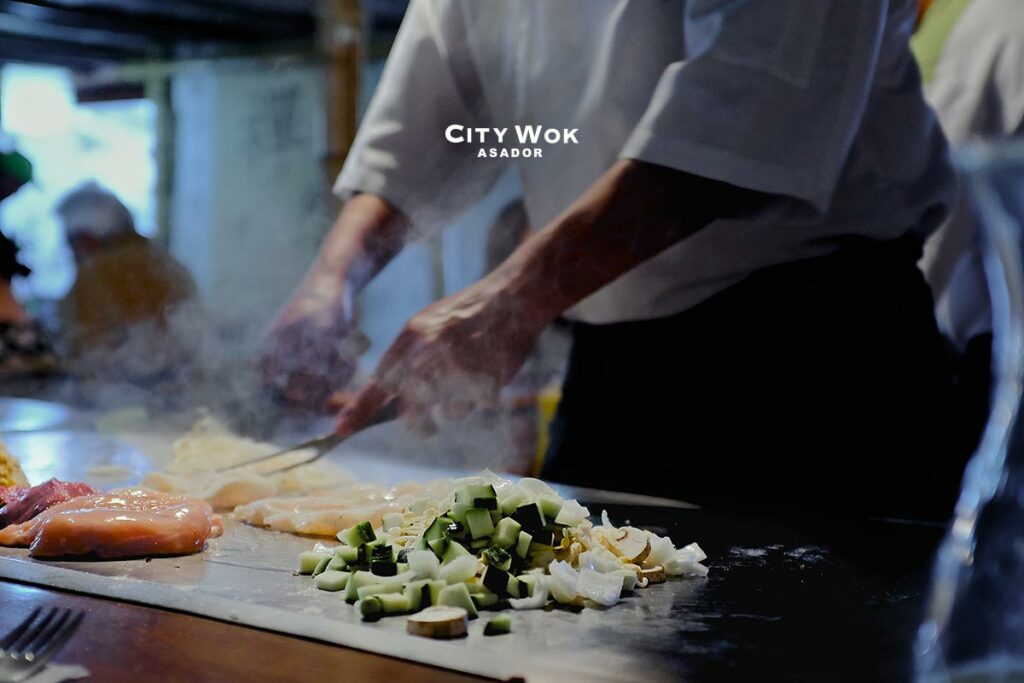¿Qué es el teppanyaki?

La cocina Teppanyaki, es un estilo de cocina asiática que está empezando a coger fama ahora en Europa. Este estilo de cocina ha adquirido el nombre de la herramienta que utiliza para preparar sus platos; una plancha de acero. Teppan significa plancha de hierro y yaki, cocinado a la parrilla, de ahí el nacimiento de su nombre.
Pero, mucha gente se pregunta, ¿qué diferencia hay entre una parrilla y un Teppanyaki? Es muy simple, Teppanyaki es un estilo de cocina que utiliza una plancha, y una parrilla es un utensilio que se utiliza para cocinar.
Esta tipología de cocina japonesa, es relativamente moderna, y es de esperar, ya que las herramientas que se utilizan: la plancha de acero, no son demasiado antiguas.Este movimiento empezó a coger fama en una cadena de restaurantes japonés, alrededor de 1945. Y su fama empezó a aumentar rápidamente debido a que los clientes frecuentes de estos locales eran artistas y turistas extranjeros, quienes poco a poco llevaron el éxito de estos restaurantes por todo EEUU y aunque ya hace tiempo que podemos disfrutar de esta cocina en Europa, ahora ha empezado a coger fama. Pero su prestigio viene por la naturalidad y lo sanos que pueden llegar a ser sus platos.
Sanos porque solo necesitan de una parrilla y muy poca grasa para cocinar y esto hace que el sabor de los alimentos se mantenga intacto. Esto junto con las salsas típicas japonesas hacen de estos platos verdaderos manjares.
Otro de los aspectos por lo que es conocido este estilo de cocina, es por que los cocineros parecen verdaderos acróbatas cuando están metidos en la cocina. Esta tipología de cocina se convierte en todo una experiencia gastronómica debido a la alta cocina y la destreza de los chefs. Es por eso que este tipo de cocina se está considerando una de las cocinas gourmet más interesantes y que está cogiendo gran protagonismo en el mundo gastronómico mundial.
¿Teppanyaki o Hibachi? ¿Cuál es la diferencia?
Teppanyaki y hibachi, son dos formas de cocina japonesa que suelen ser confundidas por las similitudes entre las dos tipologías, pero son muy diferentes.
Mientras Teppanyaki, utiliza una plancha de acero para cocinar, Hibachi utiliza también una plancha, pero un tanto diferente. Esta plancha consta de una placa que tiene forma circular y está abierta por la parte superior. Esta tipología de plancha está pensada para que funcione con carbón o madera.
¿Qué productos y platos puede encontrar en este tipo de cocina?
Este tipo de cocina va incorporando los ingredientes dependiendo de su tiempo de cocción y está pensado para que los platos se compartan entre los comensales de la mesa.
En este estilo de cocina puedes encontrar muchos ingredientes, pero los básicos que puedes encontrar en cualquier restaurante con cocina Teppanyaki es la ternera, pollo, langosta e infinitos vegetales al gusto.
Uno de los platos más famosos de este tipo de cocina es el Monjayaki. Es una especie de masa que aúna los ingredientes vegetales cortados muy pequeños y cocinados previamente en el teppan a los que una vez listos se les añade una mezcla de caldo japonés o dashi con harina. Esta mezcla se solidifica y nos deja esta masa que puede no ser muy atractiva a la vista, pero deliciosa al paladar.
Encuentra la cocina Teppanyaki en City Wok Málaga.
Para quienes tienen el paladar más exquisito, ahora ya pueden elegir la pieza exacta de carne, pescado o verdura, la cantidad exacta o la guarnición con la que queréis acompañar el plato. O bien si prefieres la comida vegana u optar por la comida real y natural, en el City Wok de Málaga, encontrarás una plancha Teppanyaki donde disfrutar de la mejor gastronomía natural.
Esta tipología de cocina es perfecta para la gente que quiere cuidarse, sin dejar de lado la mejor cocina. Sea cual sea tu perfil, en nuestra plancha teppanyaki, podrás elegir la comida qué te apetezca y nuestros cocineros te lo preparan al instante.